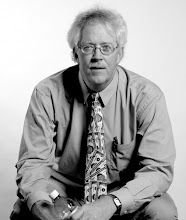It was both an exciting and sad day today (Sunday, May 30, 2010) as the 2010 Navajo Oral History project group packed up their gear and luggage and made the 4.5 hour drive from Tsaile, Arizona to the Albuquerque Airport to return home.
The photo below of the Ned Hatathli Center at Diné College is by Brianna Klapperich.

We were up before the sun to get everything packed and to get to the airport a couple hours ahead of the flights.

Ernestine Sanisya, one of our Diné College student partners, got up early also to come to our residence hall and send us off with hugs and good wishes. Plus, today was Ernestine's birthday.
After the students were dropped at the airport, they had some time to kill in the terminal and took some pictures there, and on the plane.




(above four photos by Michael Ruka)



(above three photos by Brianna Klapperich)

(above photo is by Michael Ruka)




(above four photos by Brianna Klapperich)
Once I was sure the student's flights were on as scheduled, I headed down the highway in the van filled with our stuff, heading east and north toward Minnesota. The drive will be about 30 hours over three days.
As I drove, I thought a lot about the past two weeks. The students really got to know each other well, and built positive working relationships and friends with each other, and with me. We laughed a lot during this trip, and helped each other through times of stress that naturally come from doing important work that spans two diverse cultures.
I also thought quite a bit about the 2009 Navajo Oral History project students who served as the trail-blazers during the pilot year. The 2009 students helped shaped the program and gave so much of themselves and their skills to their Navajo elders. Even after their journey was done, they continued to help me by promoting the value of the program to future students through visits to class and meetings.
I thought it would be appropriate to list the 2009 student participants here, as a way of thanking them for their role in making this program a success.
2009 Navajo Oral History Project students:
Maya Acevedo, Diné College
Cassondra Begaye, Diné College
Katie Boone, Winona State University
Sarah Botzek, Winona State University
David Busse, Winona State University
Stephan Chase, Diné College
Eli Francis, Diné College
Brandi Hagen, Winona State University
Derrick Harvey, Diné College
Cory Hinz, Winona State University
Larissa Jimmy, Diné College
Danny John, Diné College
Jessica Larsen, Winona State University
Andrew Neumann, Winona State University
Steph Precourt, Winona State University
Krystle Sorrell, Diné College
Kim Streblow, Winona State University
Peter Swanson, Winona State University
Matt Wandzel, Winona State University
After the 2009 journey was complete, a few of those students wrote a reflection quote about their experience:
"I never thought I could learn so much about myself in a place I have never been to. I took chances, climbed canyons and saw first-hand the affects of the past. I wouldn't trade it for any other trip." -- Jessica Larsen, senior MCOM-journalism major
"There is something about the land and the people here that urge you to document this great place and an amazing people." -- Peter Swanson, senior MCOM-advertising major
"It was an incredible journey. It literally changed how I saw the world." -- Katie Boone, senior MCOM-broadcasting major
I've asked the 2010 Navajo Oral History project participants to write a short reflection of their journey. When I receive those, I'll share them here on this blog.
-- Tom Grier






















































